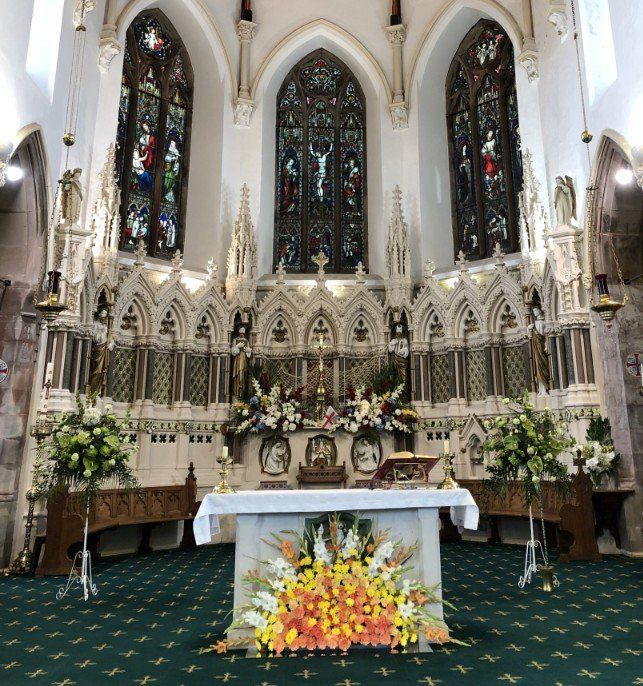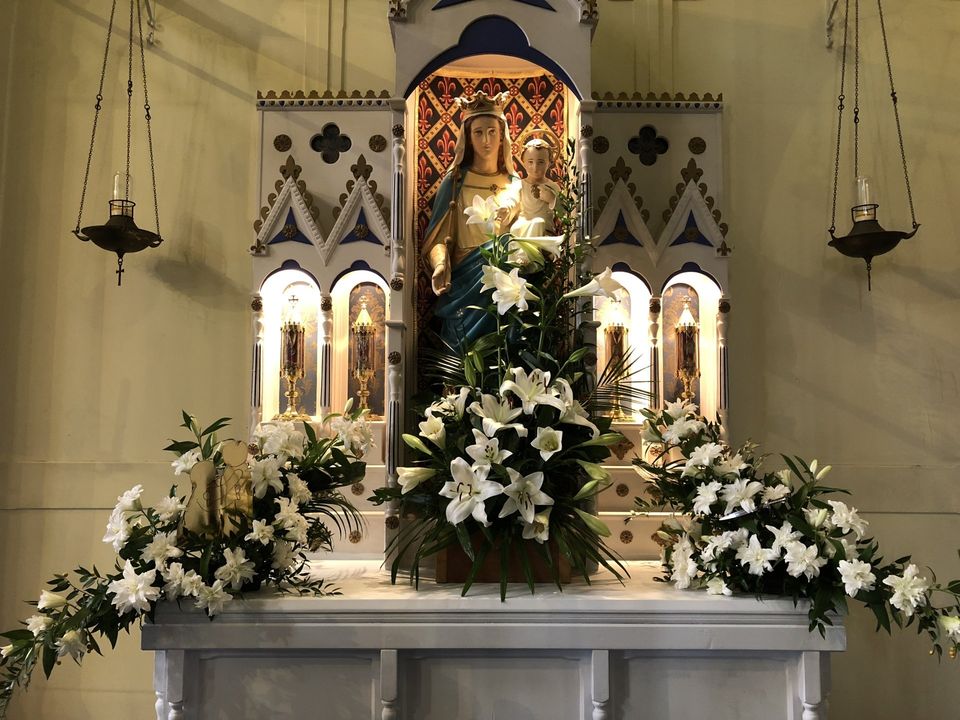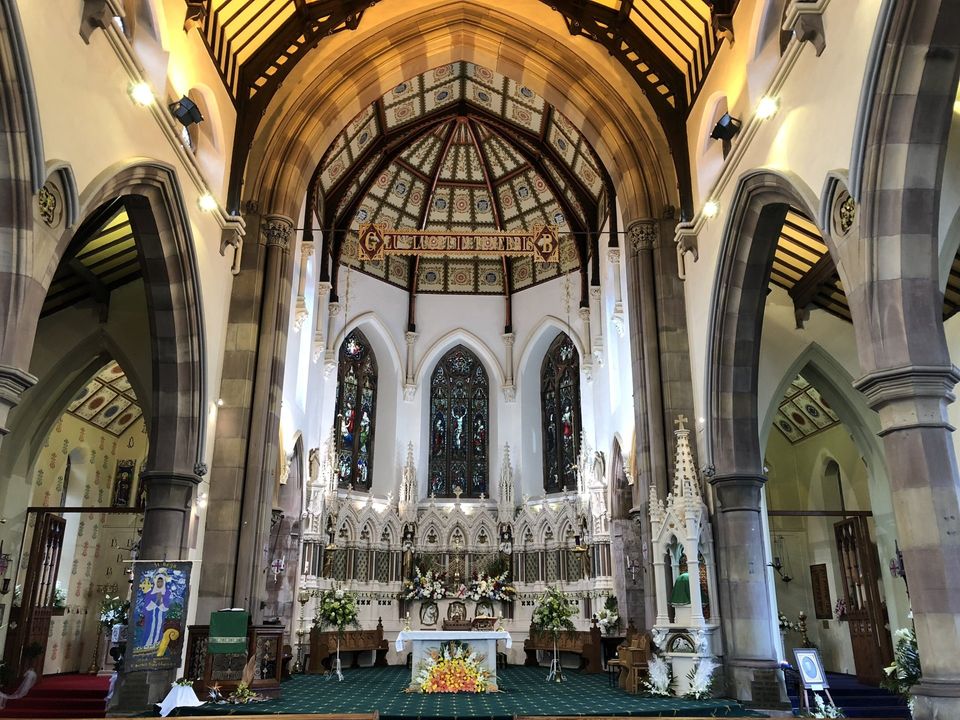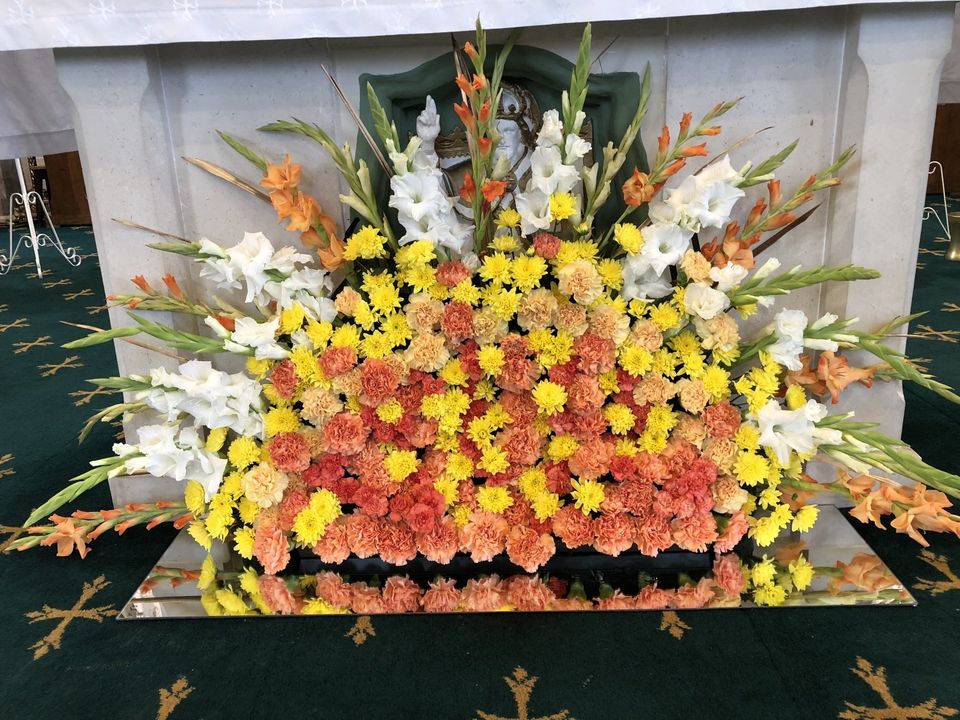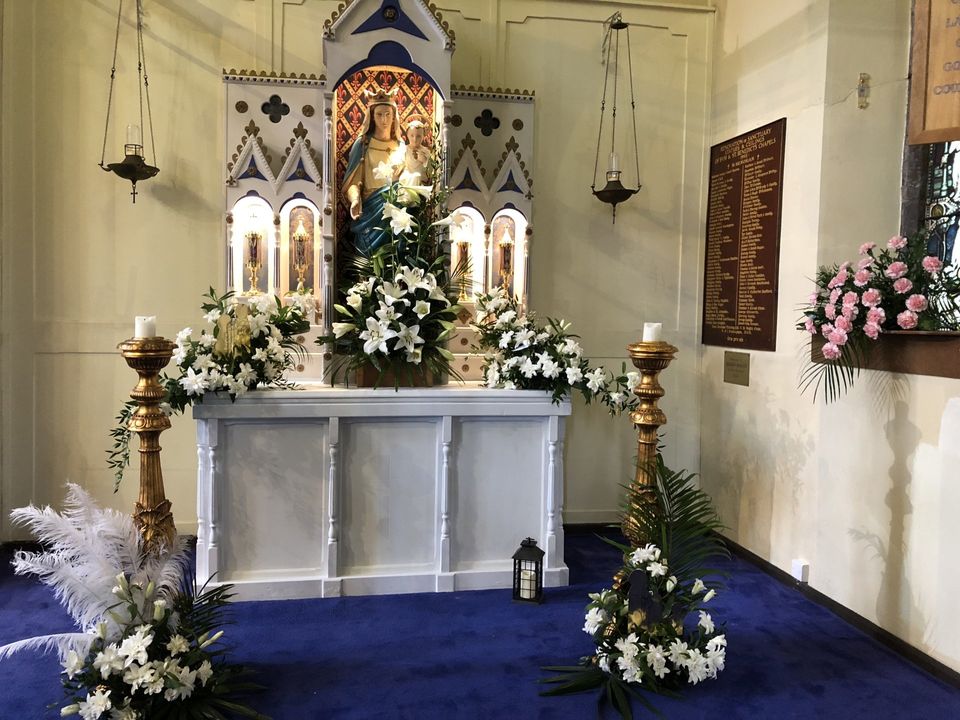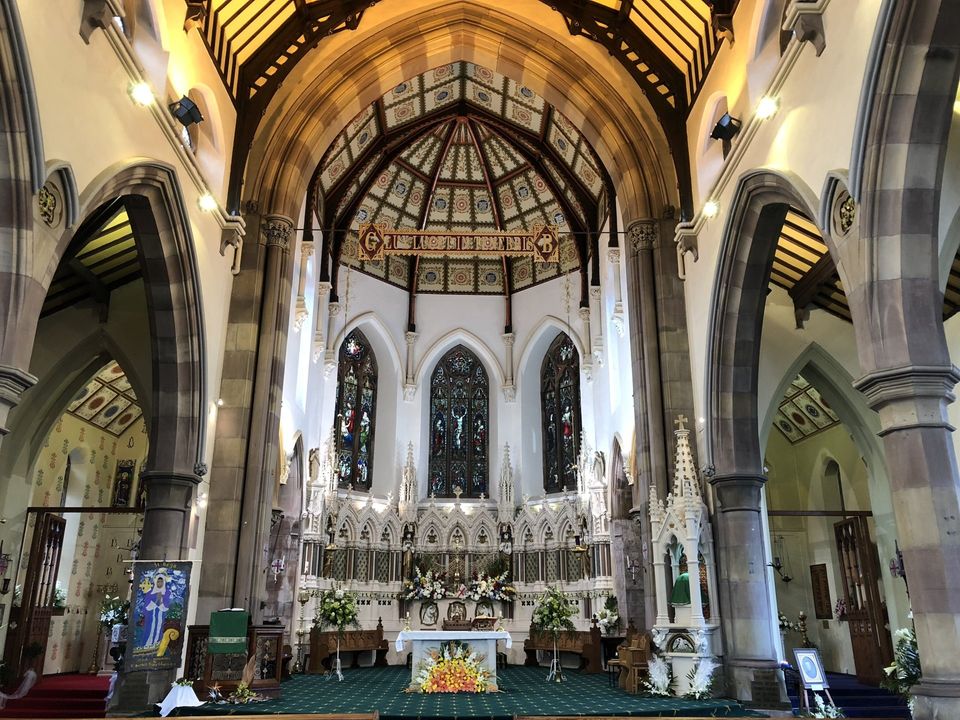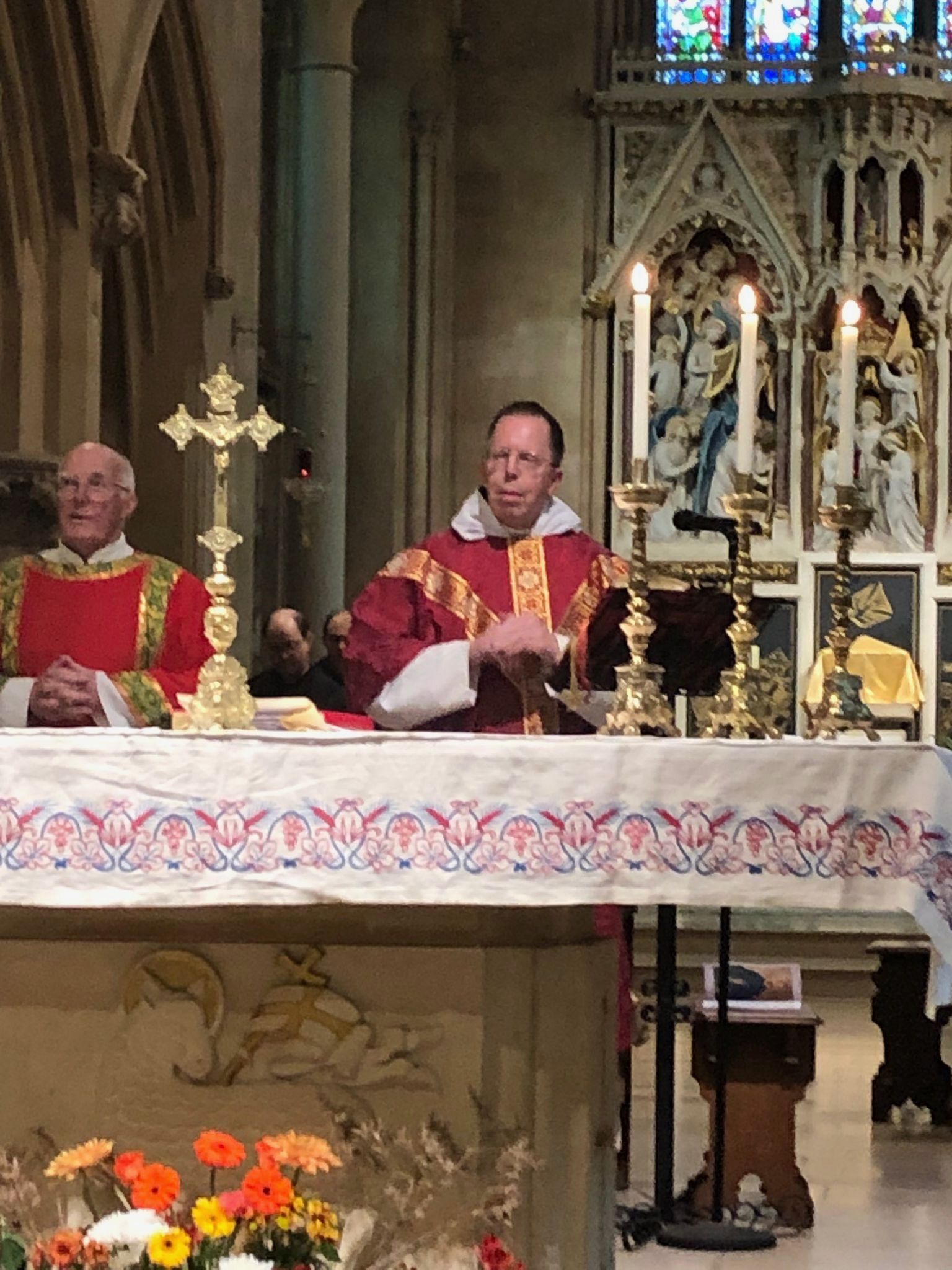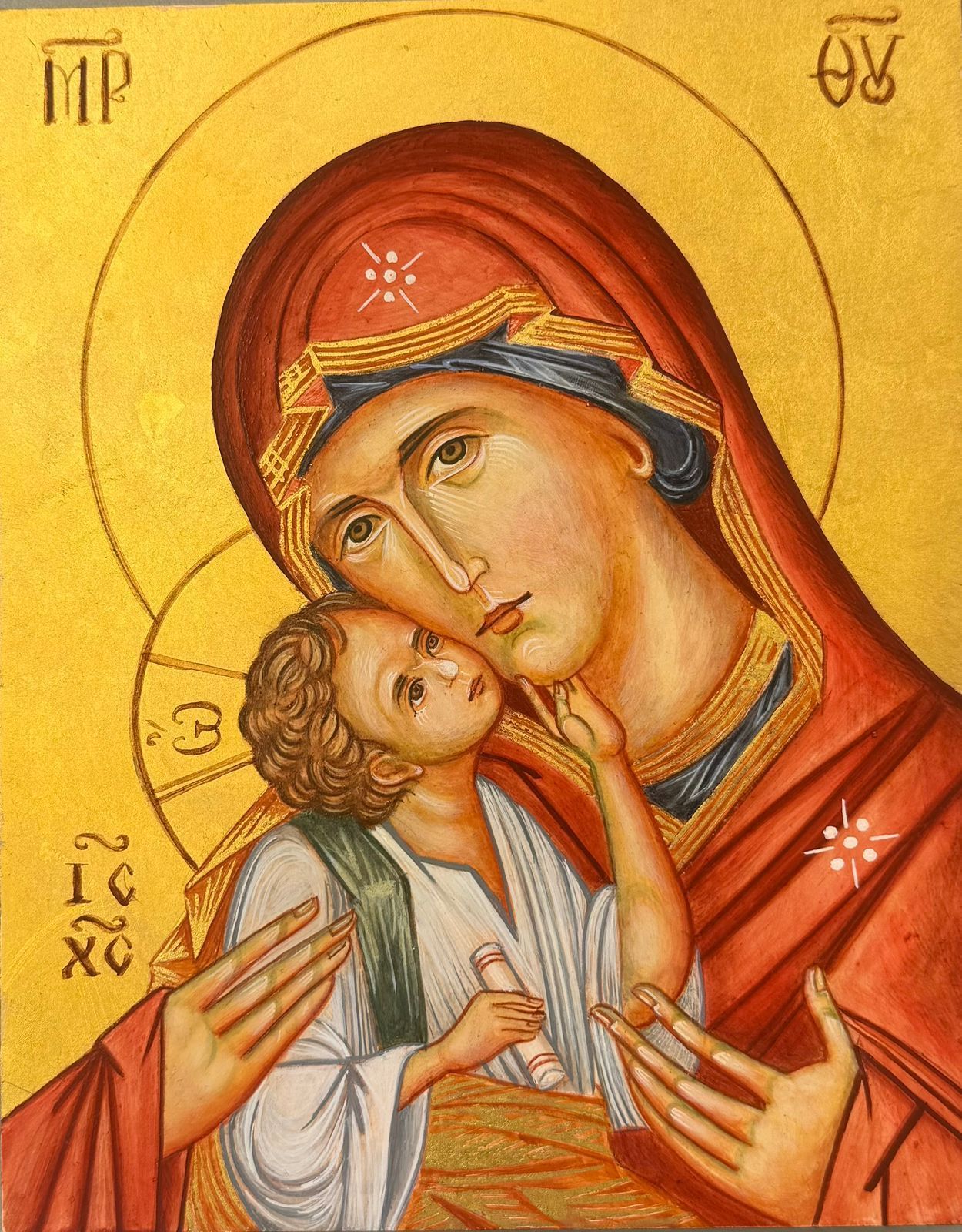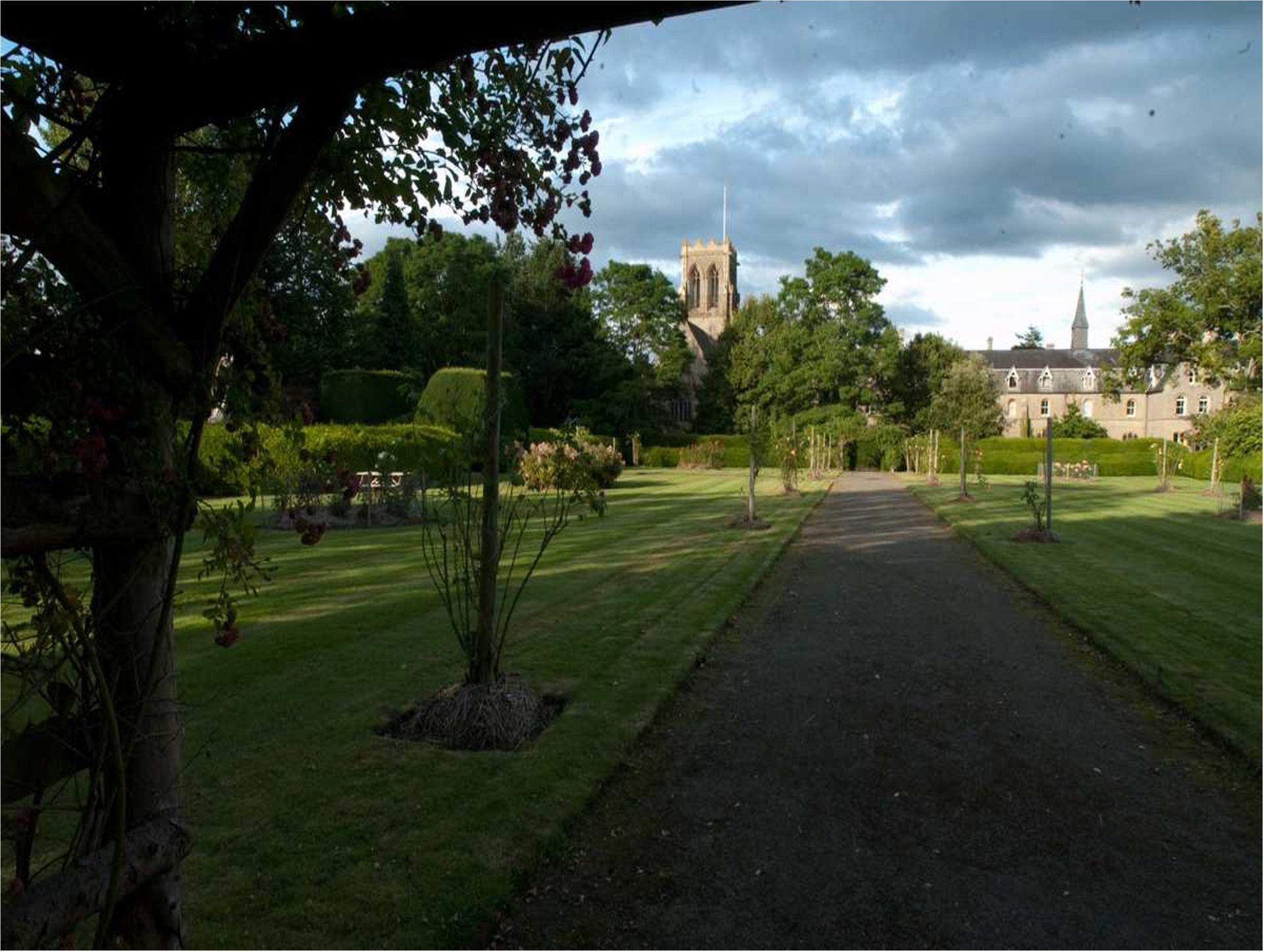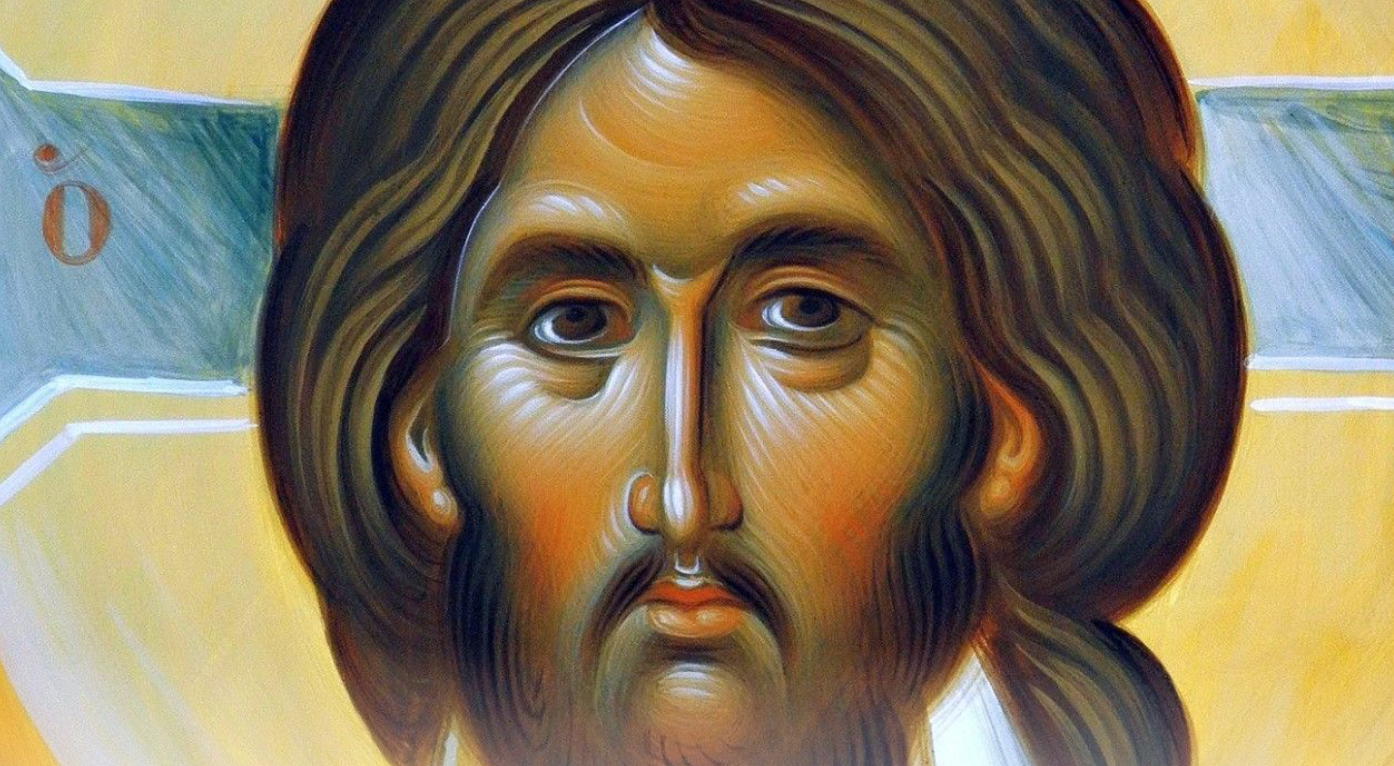150th Anniversary of St Begh’s Church, Whitehaven
Belmont has long treasured its connection with Whitehaven over the years. Many monks have served on its parishes. Recently the parish held a celebration of its 150th anniversary. Bishop Paul Swarbrick, Bishop of Lancaster presided at the Mass and Abbot Paul Stonham preached the homily. Civic dignitaries also joined the celebration along with the leaders of fellow Christian communities. A flower festival was also held to coincide with the celebration: enjoy the pictures taken by Abbot Paul and his homily telling something of the history of the Church in Whitehaven.
The the Church in Whitehaven begins in the mists of time and on a distant shore. In the middle of 9th Century, that’s roughly 1,300 years’ ago, a noble Irish maiden, escaping from home and the prospect of marriage to a marauding Viking chieftain, landed on the shores of Cumbria not far from Whitehaven and set up home as a hermit in a cell in the forest at the place we now call St Bees. She was a Christian while the Vikings were not. Her name was Begh or Bega or even Bees. Her arrival probably gave rise to the monastic settlement at St Bees where the Normans built a Benedictine monastery in 12th Century, roughly 900 years’ ago. That monastery survived until 1539, i.e. until the Dissolution of religious houses ordered by King Henry VIII at the beginning of the Reformation in England. The Benedictine monastery at St Bees was a dependant priory of the great Abbey of St Mary at York and the main focus of Christian life in this part of Cumbria. The parish went as far as Ennerdale, Loweswater, Wasdale and Eskdale, the various chapels of ease served by the monks. The only other medieval church dedicated to St Bega in Cumbria is at Bassenthwaite, founded in the 10th Century.
Just 167 years separate the dispersion of the monastic community from St Bees and the arrival of Dom Francis Rich, an English Benedictine monk of St Gregory’s monastery, Douai, to set up a Catholic mission at Whitehaven in the year 1706. In 2006, you might remember, we celebrated the 300th anniversary of our parish. However, we can be certain that English Benedictine missioners were already working in Cumbria before that date, helping to keep alive the old faith. We can also be certain that some of the original monks of St Bees lived on and worked late into the 16th Century, even though pensioned off by the king. So there is a real continuity between the Catholic Church in Cumbria before and after the English Reformation due to the Benedictine presence in these parts. An interesting point to note is that most of the missioners who served at Whitehaven well into the 19th Century were monks of Lambspring, the co-called Scottish Benedictine abbey in Germany, rather than monks of Douai, Dieulouard or Paris in France (monasteries that would become Downside, Ampleforth and Douai in England) and that some of them were actually born in Cumbria. It was rather like local boys returning home to fan the flame of Catholicism in their home county. Bear in mind that St Begh’s is the matrix or mother church of the whole of West Cumberland, as the monks in penal times served an even larger area than their forebears had from St Bees.
At the back of the church you can read the list of the rectors of this mission going back to Dom Francis Rich almost until the present day. Missing are Fr Matthew Carney and Fr Cenydd Marrison: I hope their names are added soon. That list of names, which we walk past probably without taking notice of it anymore, is really a summary of the history of this church and mission. Each one of those Benedictine monks, together with the many lay people, most of them desperately poor, who worked with them to build up the Church in this area, contributed to the development and growth of this mission. I emphasis the word “mission” for that is what a parish should still be, a hotbed of missionary activity, bringing the Gospel not only to practising Catholics, but above all to the lapsed and to unbelievers. In the past the Church in this country was missionary and zealous to bring Christ to the people. Today, by contrast, I fear that she can barely cope with pockets of maintenance as she has lost that spirit of mission. Had Fr Francis Rich and those who succeeded him been like us, there would be nothing to celebrate today and no 150th anniversary of the opening of such a beautiful church.But let’s get back to our story. It would appear that the mission at Whitehaven was put under the heavenly protection of Pope St Gregory the Great, known as the Apostle of England, because it was he who sent St Augustine and his forty monk companions to Kent in 597 to convert the paganised peoples of southern England to the Christian faith. It was St Augustine who founded the see of Canterbury. So it was that the good Benedictine fathers based at Whitehaven ministered to their scattered flock throughout the area. Originally, Whitehaven had been a small fishing village, but with the dissolution of St Bees Priory, the monastic lands passed into the hands of secular landlords. The modern growth of Whitehaven started with the purchase by Sir Christopher Lowther of the estate in 1630 and the subsequent development of the port and the mines. In 1634 he built a stone pier providing shelter and access for shipping enabling the export of coal from the Cumberland Coalfield , particularly to Ireland, which was a key event in the growth of the town. It rapidly grew from a fishing village to an industrial port. Whitehaven’s prosperity during the 18th century was based on tobacco and coal. There were soon ships plying between the town and the British colonies in America of Virginia, Maryland and Pennsylvania. Whitehaven also grew into a major coalmining town during the 18th and 19th centuries and became a substantial commercial port on the back of this trade. The beauty of its buildings, now magnificently restored, rivalled such cities as Bath and Cheltenham. The rapid growth in shipping, commerce and coalmining combined with the Irish potato famine gave rise to immigration on a massive scale from Ireland and thus the sudden growth of the Catholic population.
Fortunately, the Lowthers were known for their religious toleration, which encouraged an influx not only of Catholics but of Non-Conformists too. While Dom Oswald Johnston was priest-in-charge of the mission, in 1785, perhaps even earlier, a chapel was built, probably off Catherine Street in the centre of town. He also began visiting the Isle of Man and started up the Catholic mission there. Fr Oswald served for 37 years and was succeeded in 1818 by Dom Gregory Holden, who served for 36 years. The chapel was enlarged in 1824, but given the large number of Catholics both in the town and surrounding area, it was never large enough. Fr Gregory had a dream of building a church and had set his heart on a property on Coach Road, at the heart of the Catholic ghetto. As a result of his calming the anger of local Catholic miners and bringing peace to the working population and food to their families’ tables, the Earl of Lonsdale graciously acquiesced to his bold request for the land to be given to the Catholic community for a church to be built. In 1834 the first church was built on this sight and it was dedicated to St Gregory. We see it everyday, little realising its historic importance. It is attached to the priests’ house and now serves as a school hall and dining room. But in time even this proved to be far too small for the burgeoning congregation. It should be said that Fr Holden was also responsible for building a church in Cleator.
It was Dom Benedict Lynass, Parish Priest of Whitehaven from 1860 to 1873, who began to raise money for a new church to be built. He worked with Edward Welby Pugin, son of the great Augustus Welby Pugin, to design and build this wonderful church that we are celebrating today. Edward Welby Pugin designed many great churches all over the country, including Belmont Abbey. It is true to say that this church was built with the pennies of the poor and it is to the great credit of her parishioners that it was built at all. The new church wasn’t dedicated to St Gregory alone and eventually that title would pass to the chapel in Quay Street. It was dedicated to St Begh as well, though to begin with it was known as St Bees. It is said to have cost £6,000. The foundation stone was blessed by Bishop Patrick Dorrian of Down and Connor in 1865 and the finished church blessed and opened for worship by Bishop James Chadwick of Hexham and Newcastle in 1868. The Diocese of Lancaster did not as yet exist.
150 years’ ago, on 29th
October to be exact, this magnificent building became the parish church of
Whitehaven, a church its congregation could be justly proud of, for the people
themselves had financed the work. What distinguishes Whitehaven is that the
Catholic Church was always a church of the poor, indeed the poorest, for there
were no Catholic gentry here as in many other parts of England and Wales. The
history of what has taken place in the last 150 years has for the most part been
written, much of it in the hearts and minds of the good people who have come
here to pray and be instructed, to receive the sacraments and worship God, to
honour Our Lady and ask the saints’ intercession, to pray for the dead and
commend their souls to God. 150 years’ ago a great legacy was left here for
subsequent generations to enjoy and build on and for that we are deeply
grateful, which is why we are celebrating a Mass of Thanksgiving today. But my
question to you this afternoon is this, and I’m cheating as there’s more than
one question: What are we doing, what are you doing today that will have a
profound effect on our children and grandchildren and on the next 150 years? In
the year 2168 what will our descendants be celebrating? Will there be anything
left to celebrate? I apologise if the questions we should be reflecting on seem
harsh, even negative. Jesus told his disciples to go out to the whole world and
preach the good news. At Whitehaven, as everywhere else, we have the whole
world on our doorstep. Let us not be ashamed to proclaim that we are Catholic,
that we are Christian, and that Jesus Christ is our Lord and Saviour. Only
Jesus can save the world in which we live, our loved ones, our neighbours and
our families. Through the prayers of Our Lady and St Begh, of St Gregory, St
Patrick and St Benedict, may this new mission begin today with each one of us.
Amen.

